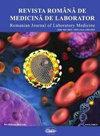细胞周期调控CCND1 G870A基因多态性与牙周炎诱导的口腔癌:风险分析
IF 0.5
4区 医学
Q4 MEDICINE, RESEARCH & EXPERIMENTAL
引用次数: 1
摘要
牙周炎/牙龈炎与口腔鳞状细胞癌(OSCC)之间有密切的联系。据报道,慢性牙周炎患者口腔癌的发病率很高。细胞周期调控/衰老基因与牙龈炎/牙周炎易感性相关。Cyclin D1就是这样一个细胞周期调控基因。一些研究结果报道了Cyclin D1 (CCND1) G870A单核苷酸多态性与口腔癌(OC)风险相关,但不同研究的数据不一致。本荟萃分析探讨了CCND1 G870A多态性与OC风险之间的确切关系。检索PubMed (Medline)、EMBASE和Google Scholar数据库寻找符合条件的研究,并计算合并优势比(ORs)和95%置信区间(CI)。对所选文章进行Newcastle-Ottawa分析,质量评估,通过Funnel图和Egger检验估计发表偏倚(如果有偏倚)。11项符合条件的研究的汇总分析表明,CCND1 G870A多态性与OC风险无显著相关性。按种族划分的亚组分析没有显示出任何关联。顺序单研究省略被执行,以确定所得出的推论的可信度和弹性。本文章由计算机程序翻译,如有差异,请以英文原文为准。
Cell Cycle Regulatory CCND1 G870A Gene Polymorphism and Periodontitis-Induced Oral Cancer: A Risk Analysis
Abstract Strong association has been recently observed between periodontitis/gingivitis and Oral squamous cell carcinoma (OSCC). A high incidence of oral cancer has been reported in the case of chronic periodontitis. Recently Cell cycle regulatory /Senescence genes have been associated with Gingivitis/ Periodontitis susceptibility. Cyclin D1 is one such cell cycle regulatory gene. Several findings have reported that Cyclin D1 (CCND1) G870A Single nucleotide polymorphism is associated with oral cancer (OC) risk, but yielded inconsistent data across different studies. This meta-analysis explores the precise relationship between CCND1 G870A polymorphism and OC risk. PubMed (Medline), EMBASE, & Google Scholar databases were searched for eligible studies and pooled odds ratios (ORs) and 95% confidence intervals (CI) were calculated. Newcastle-Ottawa analysis was done for selected articles quality assessment, bias in publication (if any) was estimated through Funnel plots and Egger’s test. Pooled analysis from eleven eligible studies suggests that CCND1 G870A polymorphism is not significantly associated with OC risk. Sub-group analysis by ethnicity failed to show any association. Sequential single study omission was performed to determine the credibility and resilience of the inferences drawn.
求助全文
通过发布文献求助,成功后即可免费获取论文全文。
去求助
来源期刊

Revista Romana De Medicina De Laborator
MEDICINE, RESEARCH & EXPERIMENTAL-
CiteScore
0.31
自引率
20.00%
发文量
43
审稿时长
>12 weeks
期刊介绍:
The aim of the journal is to publish new information that would lead to a better understanding of biological mechanisms of production of human diseases, their prevention and diagnosis as early as possible and to monitor therapy and the development of the health of patients
 求助内容:
求助内容: 应助结果提醒方式:
应助结果提醒方式:


